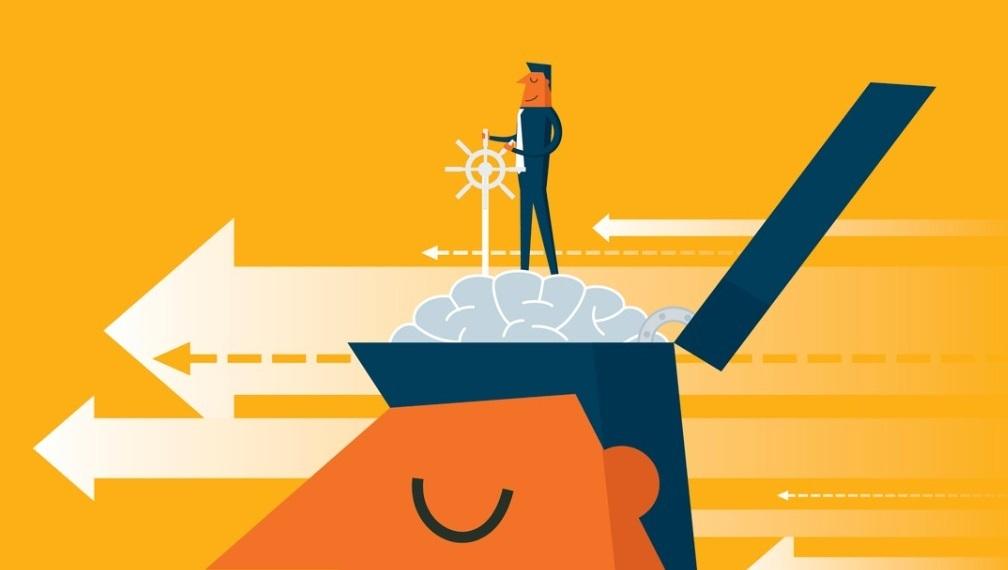How to Create Flow States at Work

We’ve all been there. Whether it was reading our favorite book, playing a video game or having a great conversation with someone, we were so immersed in the activity that hours felt like minutes. What we’ve experienced is called the “flow state.”
Flow state, brought up by psychologist Mihaly Csikszentmihalyi (1975), is defined as an intrinsically motivated and enjoyable experience. Involvement in the flow activity is so deep that people who experience flow often feel a sense of lost time and even space.[i]
Since most of us spend the majority of our waking hours working, wouldn’t it be fantastic if we could create flow states at work? Wouldn’t it be nice if we, as leaders, could create flow states for our employees to increase both of their work engagement and performance?
What if I said you actually CAN?
Before we get to how to create a flow state, let’s first look at the features of the activities that lead to it.
After interviewing and studying self-reports of athletes, artists, chess players and rock climbers, Csikszentmihalyi found that tasks that induce flow states have something in common:[ii]
- Challenging: The tasks are relatively challenging.
- Skill: People who perform these tasks are relatively skillful at these tasks.
- Intrinsic Reward: Continuous intrinsic rewards are experienced during the activities.
That’s why Csikszentmihalyi found that flow states are often experienced in games and plays. Because to play games, you can experience challenge, you need to have certain level of skills, and most importantly, you experience immediate feedback during the play. So don’t count on experiencing flow on something you’ve never performed before or something you hate doing.
Some may think work is work, and it can never be like a game. But with proper design, we can make some work-related tasks meet the three criteria of a flow-inducing task. So leaders, here are some quick tips you can use to help develop flow states for you and your followers:[iii], [iv]
- Ensure a challenge-skill balance
In flow, a person perceives a balance between the challenges of the situation and personal skills. Too easy of a task may make people feel bored, but something too difficult can cause frustration and low self-efficacy. Therefore, to help employees experience flow states, a leader should have a better understanding of the employees’ strengths and weakness and distribute tasks accordingly.
- Skill development
Helping employees continue to develop their work-related skills can assist them in reaching flow states more often. Such care and investment in employees can also make them feel valued and more motivated to achieve higher performance.
- Set clear goals
When in a flow state, a person has a clear sense on what to do and can focus all his/her attention on it. Setting clear and motivating goals for others can help them quickly get started on their work and increase their motivation.
- Give timely and clear feedback
One important feature of a flow state is that during it people get instant feedback and stimulation (That’s why sometimes it is so hard to put down a game controller!). Giving immediate, clear and enjoyable feedback that outlines your followers’ progress toward their goals (by emphasizing on their success) can somewhat mimic the reward system we often experience in playing games. Such timely and positive feedback can not only help employees adjust their behaviors to achieve better performance, it is also key to increase intrinsic motivation.
- Avoid distraction
Total concentration is key to a flow state. Try to set all your meetings on certain days of a week and encourage others to do so. Therefore, both you and your followers can have a few uninterrupted hours several times a day to get chances to fully emerge in the tasks at hand.
- Give sense of control
How can your people get into a flow state if they have to constantly stop and ask for your approval to continue? Giving your team members some autonomy when assigning tasks and letting them control their work flow can make them more intrinsically motivated to perform and get into a flow state quicker.
- Intrinsic reward
People enjoy flow states because they are intrinsically rewarding. They experience joy, value and strong senses of personal achievement. Try using intrinsic rewards instead of extrinsic rewards or punishment to make your employees enjoy their work tasks more (read more on how to increase employees’ intrinsic motivation).
Flow states often happen in a structured situation that has been practiced. With properly structured tasks and daily routines, along with seasoned personal skills, both you and your employees can experience flow states at work!
References:
[i] Csikszentmihalyi, M. (1975). Beyond boredom and anxiety: The experience of play in work and games. San Francisco, Calif.: Jossey-Bass.
[ii] Csikszentmihalyi, M. (1997). The masterminds series. Finding flow: The psychology of engagement with everyday life. New York, NY, US: Basic Books.
[iii] Jackson, S.A., & Marsh, H.W. (1996). Development and validation of a scale to measure optimal experience: The flow state scale. Journal of Sport & Exercise Psychology, 18, 17-35.
[iv] Privette, G. (1983). Peak experience, peak performance, and flow: A comparative analysis of positive human experiences. Journal of Personality and Social Psychology, 45, 1361-1368.